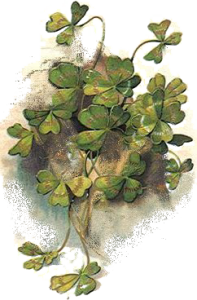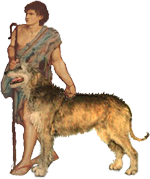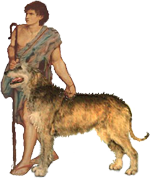 As is typical with early saints, there are few verified facts about St. Patrick’s life. But unlike most others, he left behind documents–his Confession and his Letter to Coroticus–which describe some of his experiences. He was not the first Christian missionary to reach Ireland, but the principal credit for establishing the Celtic church belongs to him. The following story is a combination of the most likely, and the most interesting, bits of information.
As is typical with early saints, there are few verified facts about St. Patrick’s life. But unlike most others, he left behind documents–his Confession and his Letter to Coroticus–which describe some of his experiences. He was not the first Christian missionary to reach Ireland, but the principal credit for establishing the Celtic church belongs to him. The following story is a combination of the most likely, and the most interesting, bits of information.
Maewyn Succat was born sometime between 370 and 430 A.D., in Brittaniæ (Post-Roman Wales, England and Scotland). He was later christened Patricius (Patrick). His father, Calpurnius, was a Roman citizen and official. All was fine until the youth was captured and sold as a slave to the house of Miliue (or Milchu), in what is now Antrim, Ireland. There he remained for six years, tending sheep and learning the language and customs of the people.
Eventually he found an opportunity to escape on a ship bound for Galliæ (France) with a cargo of Irish wolfhounds. Though the captain suspected Patrick was an escaping slave, he agreed to take him along because of his ability to calm the dogs.
He was finally reunited with his family, then joined a monastery and studied under St. Germain, the bishop of Auxerre. About a dozen years later, he too became a bishop.
But his soul heard the irresistible call of Ireland and he finally convinced his superiors to appoint him as bishop to the land where he had been enslaved (succeeding Paladius).
He traveled throughout Ireland, establishing monasteries, schools and churches. He also reformed harsh Irish justice with energy, wit and kindness.
His mission in Ireland lasted for thirty years. After that time, Patrick retired to County Down. He died on March 17 in AD 461. That day has been commemorated as St. Patrick’s Day ever since. (The custom came to America in 1737 when St. Patrick’s Day was publicly celebrated in Boston.)
Though originally a Catholic holy day, St. Patrick’s Day has evolved into more of a secular holiday, with traditions such as wearing green for Ireland and the shamrock (Patrick used the three-leafed shamrock to explain the Trinity).
1.888.414.8850
patron@saintspreserved.com

